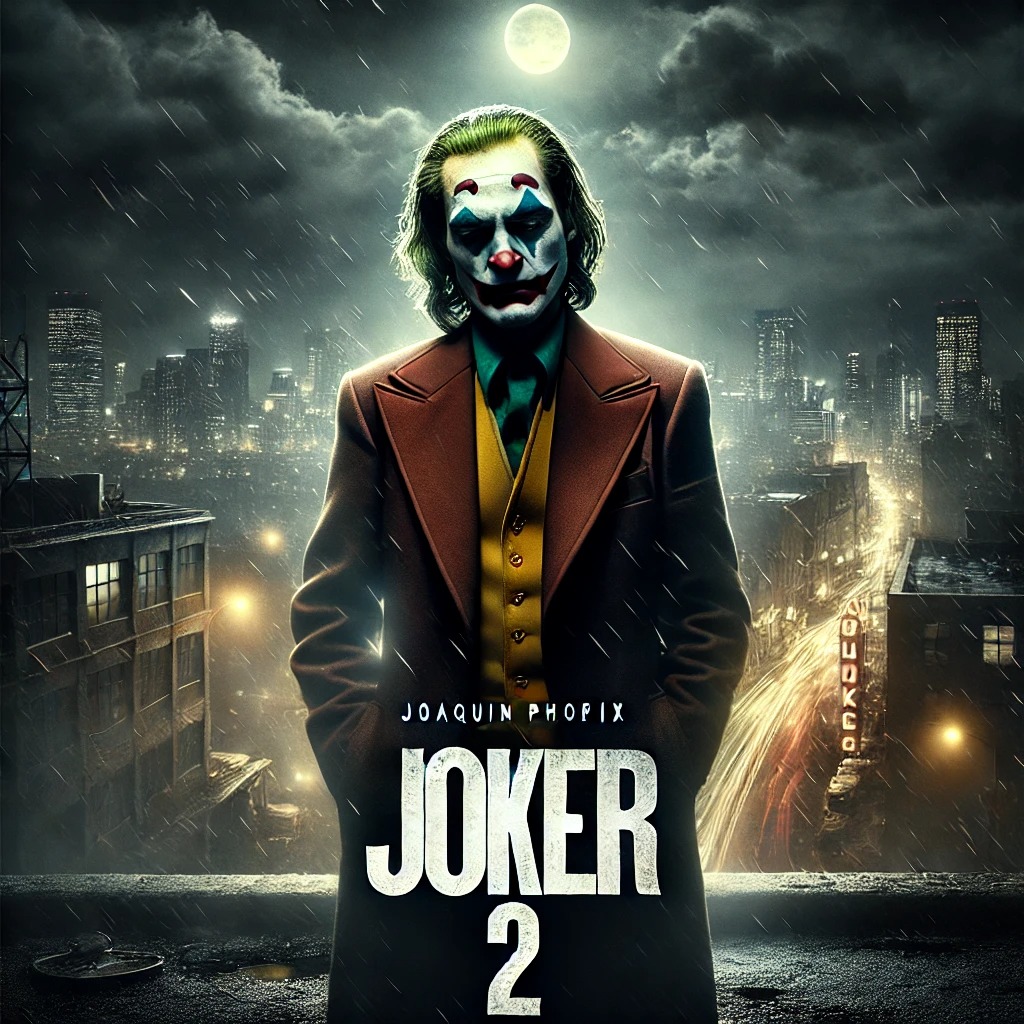The long-anticipated sequel to the 2019 hit Joker, Joker: Folie à Deux, has arrived, but instead of pushing the boundaries of its predecessor, it becomes a perplexing, sluggish attempt to reinvent the chaos that once captivated audiences. Rather than building on the electrifying energy of the first film, this follow-up buries itself in a tedious courtroom drama, awkward musical numbers, and a fundamental misunderstanding of what made the original so gripping.

Phillips’ latest effort is sure to spark debate, but for all the wrong reasons. What should have been a daring exploration of mental illness and societal breakdown turns into a plodding, uninspired sequel that leaves fans scratching their heads. Here’s why Joker: Folie à Deux is bound to leave even the most devoted fans of the Clown Prince of Crime disappointed.
From Explosive to Listless: A Sequel That Deflates Expectations
In 2019, Joker delivered an unapologetic descent into the chaotic mind of Arthur Fleck, a deeply troubled man pushed to the brink by society’s neglect and cruelty. Joaquin Phoenix’s portrayal of Fleck earned him an Oscar, and the film’s dark, gritty tone resonated with audiences, making it one of the most talked-about films of the year. Fans anticipated that the sequel, especially one with Lady Gaga joining the cast, would build on the frenetic, raw energy of the first.
But Joker: Folie à Deux is a drastically different beast. Instead of ramping up the volatility, the film seems to actively work against it. For all the buzz surrounding it being a musical and co-starring Gaga, the film somehow manages to dull its own impact. It drags itself through sluggish courtroom scenes, punctuated by bizarre musical numbers that feel more like interruptions than integral pieces of the story.
Joker: Folie à Deux – A Chaotic Sequel That Fumbles Its Own Madness

Why It Falls Flat:
- The film spends more time in a drab courtroom setting than exploring the anarchic madness that fueled the original.
- Arthur Fleck’s (Joaquin Phoenix) transformation into Joker feels neutered, offering none of the live-wire intensity that defined his character in the first film.
- Lady Gaga’s portrayal of Lee Quinzel (Harley Quinn) doesn’t ignite the screen, and her chemistry with Phoenix is lukewarm at best.
- Despite its musical label, the film fails to capitalize on the potential explosiveness of its genre mashup, leaving audiences craving more than just uninspired performances.
The Failed Promise of Harley Quinn
One of the biggest draws for Folie à Deux was the introduction of Lady Gaga as Harley Quinn, Arthur’s infamous love interest. Fans were eager to see how the Academy Award-nominated singer and actress would breathe life into this iconic character, especially alongside Phoenix’s Joker. However, the portrayal of Harley Quinn feels shallow and underwhelming, with her character reduced to little more than a prop in Arthur’s story.
In this version, Quinn—here referred to as Lee Quinzel—is introduced as a music teacher in a minimum-security section of Arkham Asylum. Arthur becomes enraptured by her from the moment he sees her sing in a class, and their connection forms quickly. However, unlike the explosive, toxic love story audiences might have expected, Arthur and Lee’s relationship plays out in a much tamer, less enthralling manner.
Missed Opportunities with Harley:
- Lady Gaga’s Lee Quinzel is treated more as a catalyst for Arthur’s rebirth than a fully realized character with her own arc.
- Their romantic relationship, which should be filled with the chaotic energy of two deranged individuals, instead feels flat and lacks emotional intensity.
- Their shared musical numbers, meant to represent their emotional connection, fall short of creating the tension or excitement fans were hoping for.
The film seems more interested in using Lee to serve Arthur’s narrative rather than exploring the fascinating dynamic that could have arisen between two of Gotham’s most notorious criminals. This is a huge letdown, considering how vital Harley Quinn has been to the Joker’s story in other iterations.
Courtroom Drama That Drains the Chaos

Where Joker thrived on the unpredictability and instability of its lead character, Folie à Deux grounds him in a drab courtroom setting that saps the film of any momentum. After his murder spree at the end of the first film, Arthur Fleck is now incarcerated in Arkham Asylum. Instead of embracing his chaotic nature, the film traps him in monotonous legal proceedings where his lawyer argues that Joker is a separate personality, created as a result of Arthur’s traumatic childhood.
As Arthur stands trial, the film drags itself through one sluggish courtroom scene after another, where Arthur’s former colleagues and victims reappear to testify against him. Zazie Beetz’s Sophie and Leigh Gill’s Gary are paraded in front of the jury to discuss Arthur’s violent outbursts and delusions. Even Arthur’s decision to represent himself in Joker makeup falls flat, failing to generate any excitement or tension.
Joker: Folie à Deux – A Chaotic Sequel That Fumbles Its Own Madness
Why the Courtroom Drama Fails:
- The legal setting confines the story to a dull, formulaic plot, robbing the film of the unpredictability that defined the first Joker.
- Arthur’s trial feels like a retread of the original film, with familiar characters brought back solely to relitigate his past actions.
- The film assumes that the audience will be captivated by the legal debate over Arthur’s mental state, but this tedious psychoanalysis lacks the emotional weight necessary to carry the story.
The courtroom drama might have worked if it were used as a backdrop for more explosive scenes of Arthur’s madness, but instead, it becomes the main focus of the film, much to its detriment.
Bizarre Musical Numbers That Add Little
While the idea of blending the grim world of Joker with a musical might have seemed intriguing on paper, in practice, the musical sequences in Folie à Deux feel awkward and out of place. Instead of enhancing the story, they come across as disjointed, with Phillips failing to weave the musical elements seamlessly into the narrative.
Arthur and Lee perform helter-skelter versions of classic songs like “To Love Somebody” and “That’s Entertainment,” but these moments are more baffling than captivating. The duo’s attempts at emulating the likes of Sonny and Cher during a television duet feel forced, and the lyrics—meant to reflect their mental states—are delivered with clunky, uninspired choreography.
The Problem with the Musical Sequences:
- They fail to inject energy into the film, often feeling like distractions rather than integral parts of the story.
- The musical numbers don’t add depth to Arthur’s or Lee’s characters, making them feel like gimmicks rather than meaningful storytelling devices.
- Instead of using the music to explore the characters’ inner turmoil, Phillips resorts to perfunctory song-and-dance routines that do little to elevate the film.
For a film that’s supposed to blur the lines between performance and reality, the musical sequences in Folie à Deux feel oddly lifeless and disconnected from the rest of the narrative.
A Sequel That Fails to Break New Ground
Perhaps the most frustrating aspect of Joker: Folie à Deux is its failure to break new ground. Where the first film was a visceral exploration of a man’s descent into madness, the sequel seems content to simply rehash the same questions without offering any new insights. Is Arthur a victim of trauma, or is he a cold-blooded anarchist? The film spends an inordinate amount of time on this question, but it never provides a satisfying answer.
Joker: Folie à Deux – A Chaotic Sequel That Fumbles Its Own Madness
Instead, Folie à Deux delivers scene after scene of Arthur’s psychoanalysis, assuming that the minutiae of his mental state is enough to sustain the film’s narrative tension. But without the chaotic, live-wire energy of the first Joker, this deep dive into Arthur’s mind feels tedious and uninspired.
No Catharsis, No Payoff
In the end, Joker: Folie à Deux denies its audience any sense of catharsis or emotional payoff. Where the first film culminated in a bloody, explosive act of rebellion, the sequel fizzles out with a series of half-hearted musical numbers and courtroom scenes that fail to deliver on the promise of chaos.
Even when Arthur is reunited with his Joker persona and dons his iconic makeup, the film refuses to let him fully embrace his madness. Instead of an electrifying finale, we’re left with a limp, unsatisfying conclusion that feels more like a footnote than a final act.
The Sequel No One Wanted
Ultimately, Joker: Folie à Deux is a disappointing follow-up to a film that captivated audiences with its raw intensity and dark psychological depth. Instead of pushing the boundaries of its predecessor, Phillips delivers a sequel that feels both uninspired and overly safe, trapping its lead character in a dreary legal drama that never quite gets off the ground.
Joker: Folie à Deux – A Chaotic Sequel That Fumbles Its Own Madness
For fans of the original Joker, Folie à Deux is likely to be a frustrating and bewildering experience, one that fails to recapture the magic of its predecessor. And while Lady Gaga’s involvement may have piqued interest, her portrayal of Harley Quinn leaves much to be desired, further diminishing the film’s potential impact.
In the end, Joker: Folie à Deux feels like a sequel no one asked for—a tedious, lackluster film that denies its audience the chaos and catharsis they came for.
Verdict: If you’re a die-hard fan of the first Joker, Folie à Deux may leave you wondering what went wrong. With uninspired musical sequences, sluggish courtroom drama, and a lack of explosive chemistry between its leads, this sequel fails to live up to its potential. Rather than delivering a thrilling exploration of madness, it opts for a bland retelling of Arthur’s psychological torment, one that never quite hits the mark.


